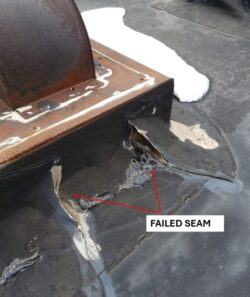As air travel continues to evolve, so does the infrastructure that supports it. At Martin Design Group LLC, we specialize in cutting-edge airport engineering solutions that balance safety, efficiency, and sustainability.
General aviation (GA) airports are vital hubs for local aviation communities, supporting private pilots, flight schools, and small businesses. While smaller than major commercial airports, they face similar challenges in maintaining safe and serviceable runways. Over time, issues like obstructions to navigable airspace, drainage problems, and grading deficiencies can compromise runway safety areas (RSAs)—critical zones designed to protect aircraft during runway excursions. Proactive planning for RSA initiatives is crucial to ensure these airports remain safe and operational. Drawing on insights from the Federal Aviation Administration (FAA), industry reports, and a recent runway safety project at Minneapolis–Saint Paul International Airport (MSP), this article explores why GA airports must prioritize RSA maintenance to address evolving challenges.
Runway safety areas are defined surfaces surrounding a runway, at large airports they are typically 500 feet wide and extending 1,000 feet beyond each runway end. They have lessor dimensions at smaller GA airports. They provide a graded, obstacle-free zone to minimize risks if an aircraft overruns, undershoots, or veers off the runway. According to the FAA, RSAs must be free of debris or non-frangible objects, properly graded, and capable of supporting aircraft, emergency vehicles, and snow removal equipment. Many GA airports, especially older ones, were built before modern RSA standards were established, making upgrades essential to meet current safety requirements.
The Metropolitan Airports Commission (MAC) recently announced a significant RSA improvement project at MSP, a major airport that underscores the importance of proactive maintenance. In 2025, MSP temporarily closed its south parallel runway (12R-30L) in two phases—April 14 to May 23 and again later this summer August 18 to September 26—for runway safety area grading, drainage improvements, shoulder enhancements, and taxiway reconstruction. This $3.48 million initiative ensures compliance with FAA specifications and maintains the highest safety standards for aircraft operations.
(https://metroairports.org/news/msp-airport-temporarily-closing-runway-airfield-improvements)
While MSP is a large commercial airport, its approach offers valuable lessons for GA airports. The project highlights the need to address aging infrastructure, such as drainage systems and uneven grading, which can degrade over time. For GA airports with limited budgets, similar proactive measures—though scaled down—are equally critical to prevent safety risks and maintain serviceability. An inadequate RSA grade can also affect drainage and create ponding on airport runways that has a detrimental effect on aircraft braking during touchdown.
Drainage and grading issues are common, particularly as infrastructure ages. Poor drainage can cause water pooling and hydroplaning. The presence of water in the soil in the RSA area also weakens its ability to support aircraft or emergency vehicles. Natural settling, erosion, or inadequate maintenance can also lead to uneven grading that presents a challenge during a high-speed exit into the unpaved surfaces, which compromises safety. The MSP project includes specific drainage and shoulder improvements to address these issues, demonstrating the importance of regular maintenance. (https://metroairports.org/news/msp-airport-temporarily-closing-runway-airfield-improvements)
Failing to proactively address RSA issues can have serious consequences. A degraded RAS increases the risk of accidents, potentially leading to costly liabilities or temporary airport closures. For GA airports, which may only have one runway and often serve as economic drivers for local communities, maintaining serviceability is critical. The FAA’s Runway Safety Area Program has improved over 1,000 runways at 500 airports, but many GA facilities still require upgrades to meet modern standards. Proactive planning, including budgeting for regular maintenance and leveraging FAA grants, can prevent minor issues from escalating into major problems.
GA airports must adopt a forward-thinking approach to RSA maintenance, drawing inspiration from projects like MSP’s. Regular inspections, airspace monitoring, and community collaboration are key to identifying and addressing issues early. By prioritizing RSA initiatives, GA airports can ensure safety, comply with FAA standards, and maintain operational reliability for their communities. Reach out to Martin Design Group if you are looking for advice and planning for a runway improvement project.
Conclusion
From planning to execution, our veteran-owned team can help you assess your RSA and recommend improvements!


